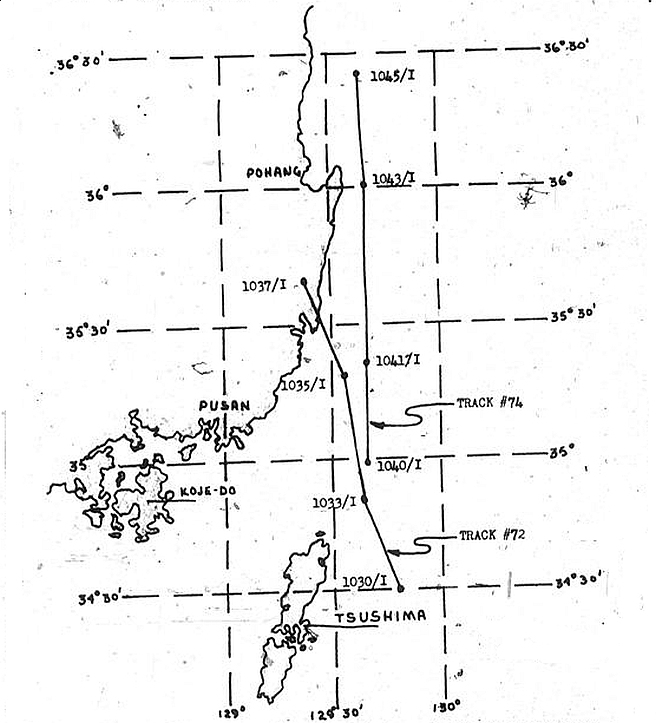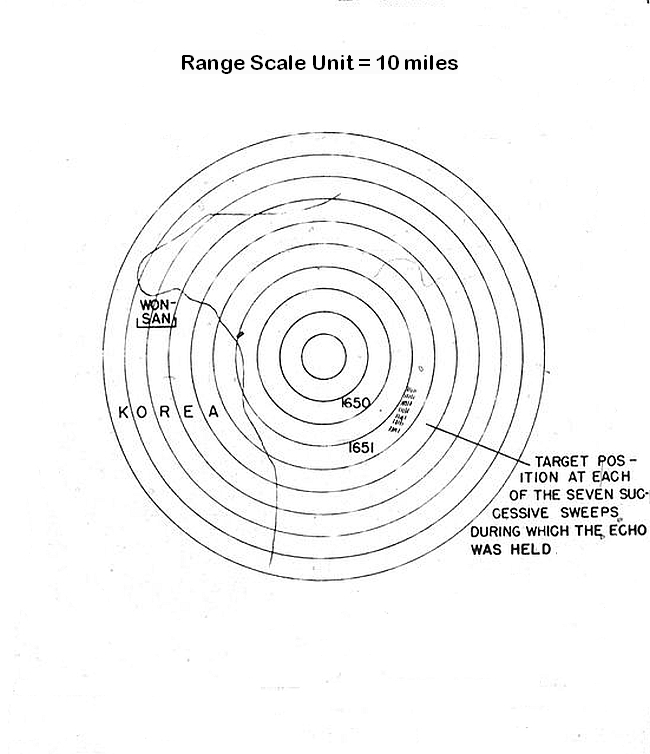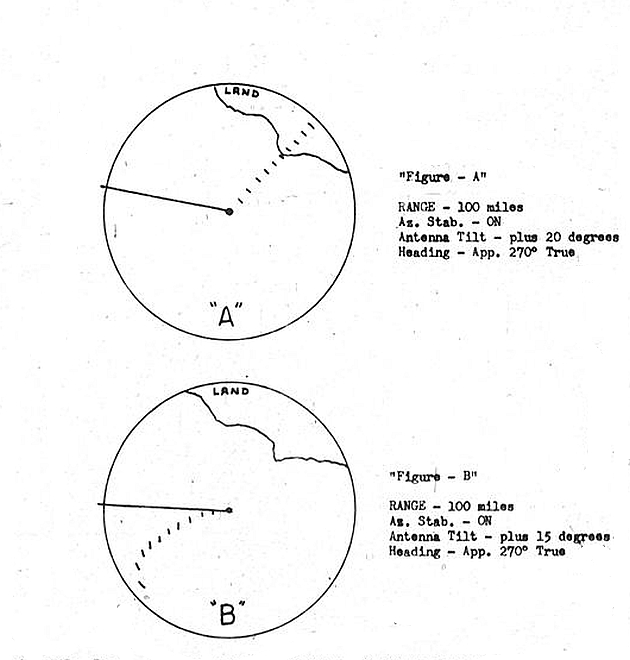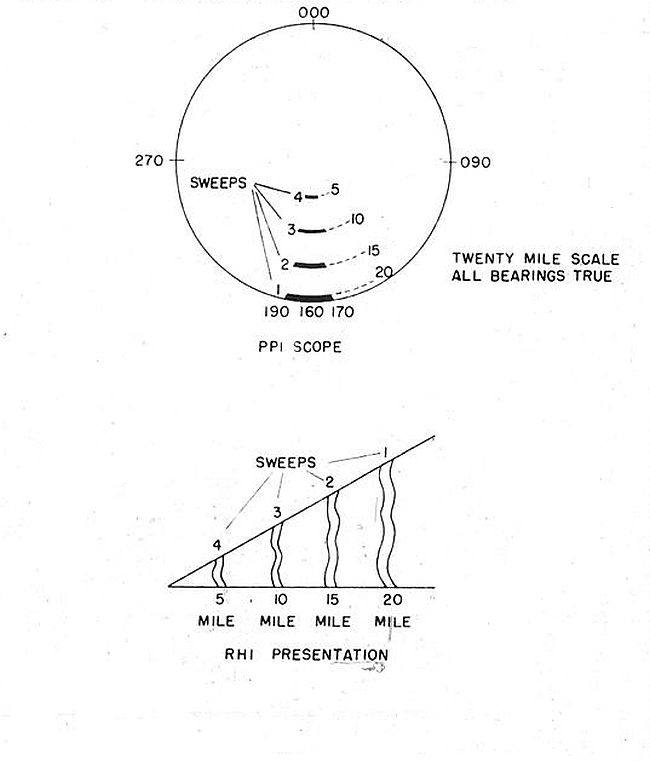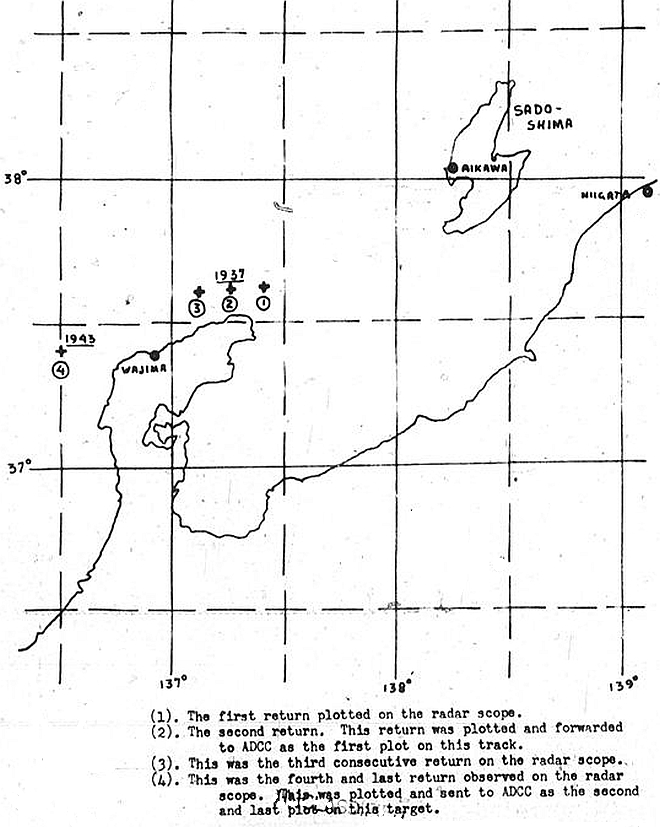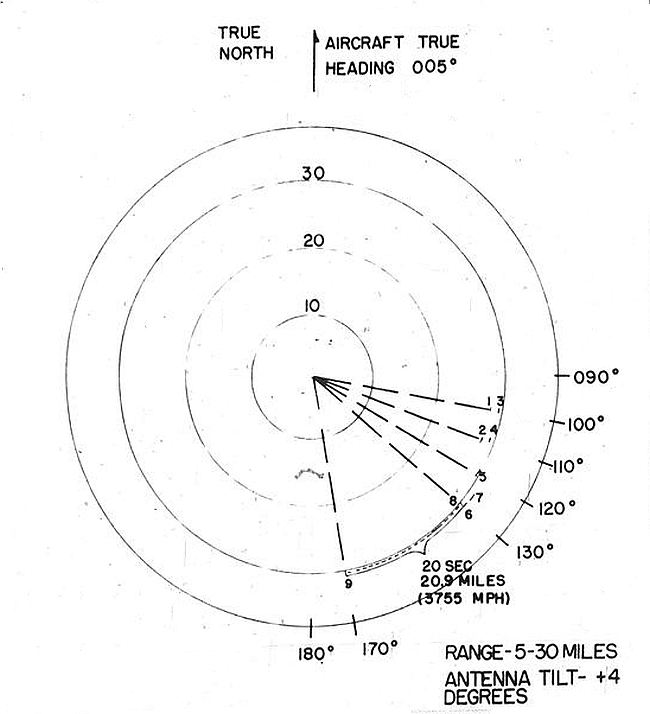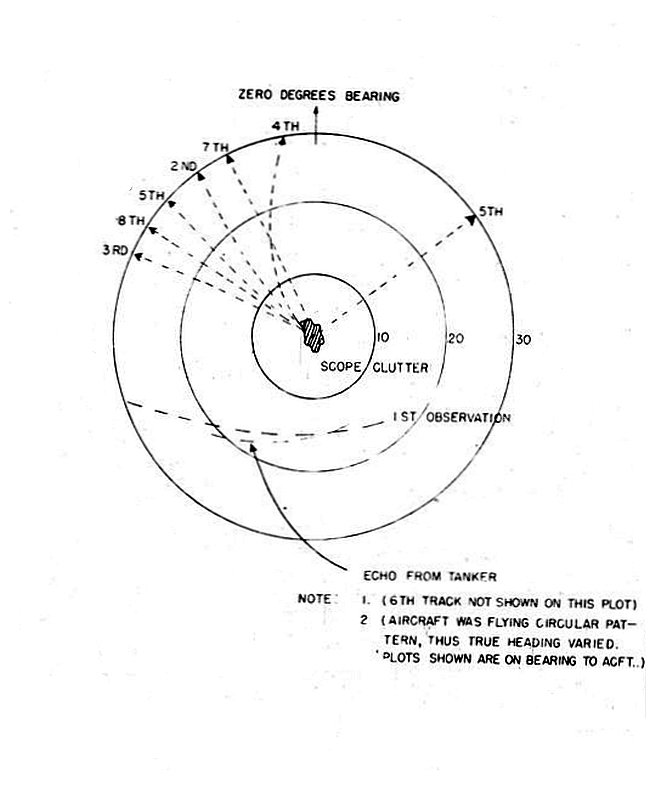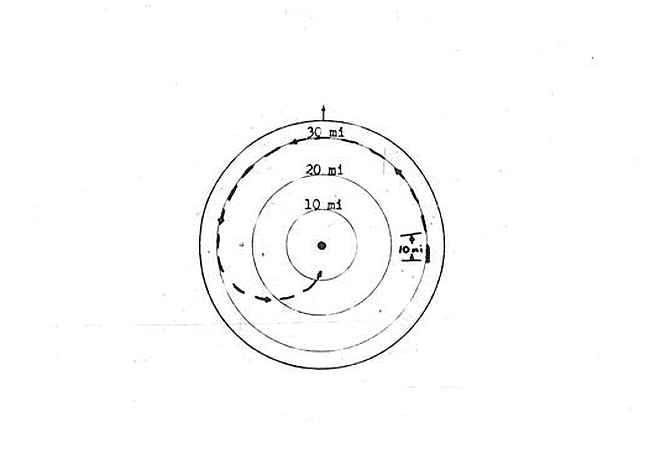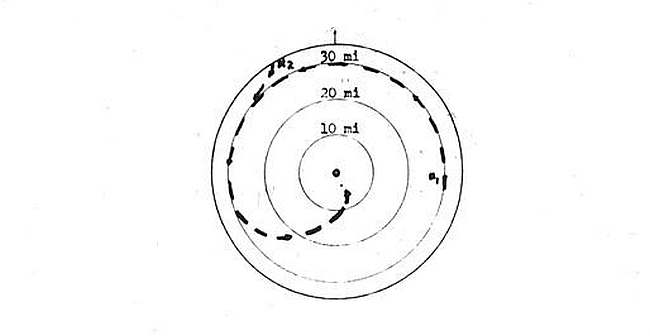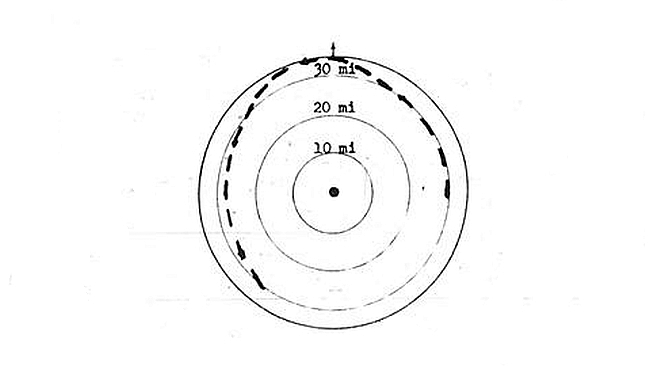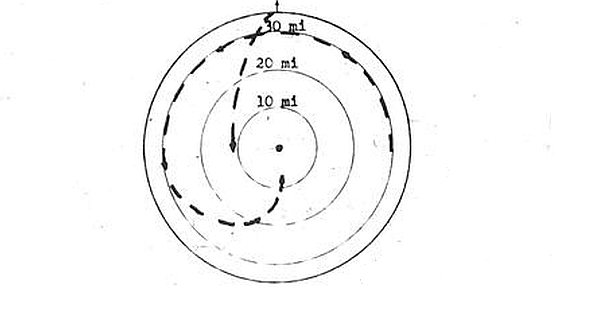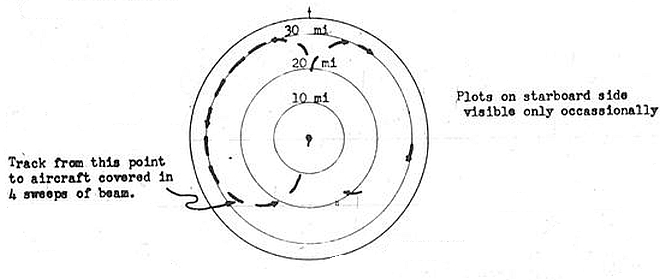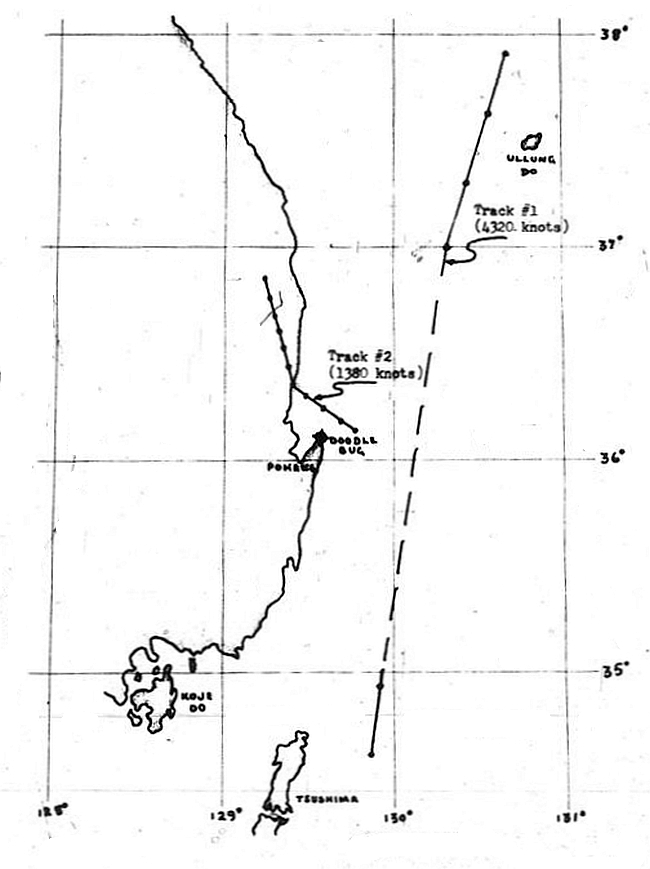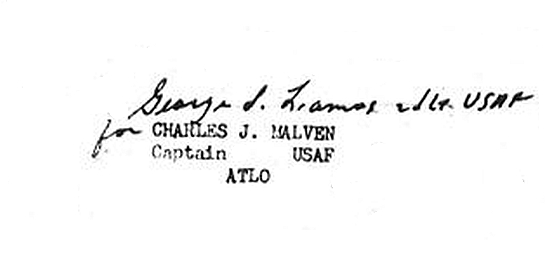|
COUNTRY
Japan |
REPORT NO
|
LEAVE BLANK
|
AIR INTELLIGENCE INFORMATION REPORT |
||
|
SUBJECT
FLYOBRPT |
AREA REPORT
Japan/Korea Area |
FROM (Agency)
ATIL Office, D/I FEAF |
|
DATE OF REPORT
11 July 1952 |
DATE OF INFORMATION
|
|
|
PREPARED BY (Officer)
Charles J. Malven, Captain, USAF (ATLO) Classified Reconnaissance Branch, D/I FEAF |
||
|
REFERENCES (Control number, directive, previous report, etc., as applicable)
AFL 200-5, 29 Apr 52 FSAF IR-20-52, IR-23-52, IR-25-52, IR-27-52 |
||
1. This is a compilation of various reports of unusual radar plots which have been observed in the Far East.
2. It is believed that all such reports have been forwarded to Headquarters, United States Air Force, or to the Office of Naval Intelligence. This report is therefore being made to insure that all observations on file at this headquarters are consolidated to insure against loss of any individual reports.
3. This information was extracted from a file, collected and evaluated by Mr. Wallace Bush, Electronics Engineer, Classified Reconnaissance Branch, Director of Intelligence, Headquarters, Far East Air Forces. Since the file consisted of information copies of reports, notes taken from briefings, and various sketches, much data is necessarily missing. The information herein reported is therefore, all that is available at this headquarters.
4. Evaluation is given to each report individually. Comments are included where deemed appropriate. Each report is given on a separate page for ease of collation and filing.
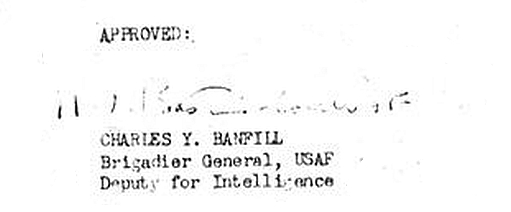
|
